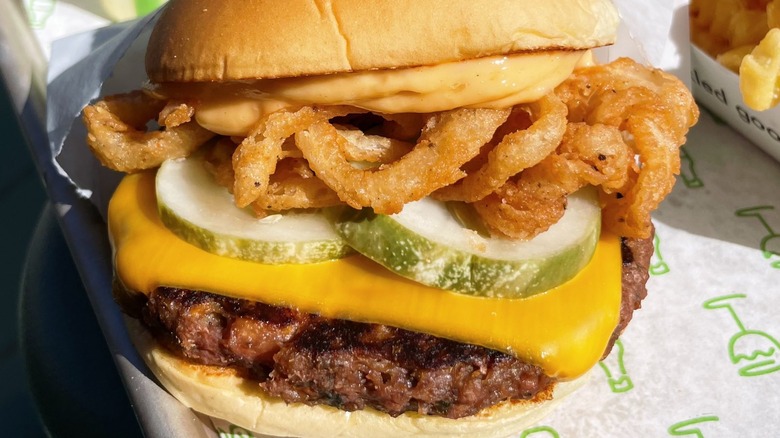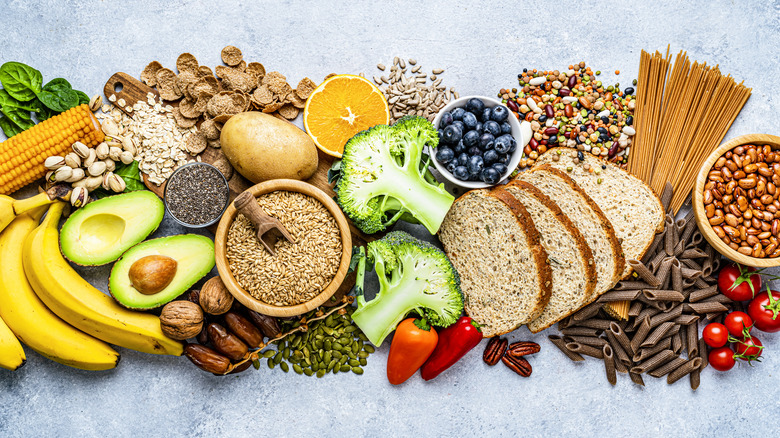The Key Ingredients That Elevate Shake Shack's Veggie Burgers
Shake Shack added a veggie burger, along with dairy-free milkshake and custard, to its core menu last May — and, to some peoples' surprise, it's actually good. Tasting Table got in touch with John Karangis, the Executive Chef and Vice President of Culinary Innovation at Shake Shack to get the inside scoop on what makes their plant-based burgers, also known as the Veggie Shack, stand out from the rest. According to him, it all comes down to a few key ingredients.
"The veggie burger in our Veggie Shack is made from real vegetables, herbs and grains. It's packed with umami-rich flavors from mushrooms, sweet potatoes, carrots, leeks, farro, quinoa and herbs," says Karangis. But, besides the addition of toppings like American cheese, crispy onions, pickles, and ShackSauce, what takes this beef-less burger to the top is the intention behind every ingredient and technique.
"Each ingredient in the veggie burger has a purpose and brings flavor and texture," Karangis explains. He goes on to say that the "vegetables and ingredients are roasted, caramelized, and reduced at critical times in the cooking process. We also fold in our cooked grains to offer additional texture, flavor, and protein."
A thought-out texture
According to Karangis, when creating the Veggie Shack, the intention was to provide a sandwich that would satisfy both veggie lovers and meat eaters. To achieve that, he knew they'd have to incorporate quality ingredients and textures that mimicked those of a beef patty — without actually using any beef. The umami-rich ingredients are what deliver the Veggie Shack's meat-like flavors, and they're all cooked in specific ways to get the desired flavor and texture that Karangis looked for in its creation.
There is one trick that Karangis notes in particular, however — one that he attributes to the Veggie Shack's spot-on texture. "Our use of real, whole grains like farro and quinoa brings texture to the burger patty and mimics pieces of fat you'll find in a traditional beef burger," he tells Tasting Table. The grains are intentionally cooked and then thoughtfully folded into the patty mixture rather than stirred. It's assumed that, by gently folding rather than mixing, the grains retain their shape, and their texture is preserved.

